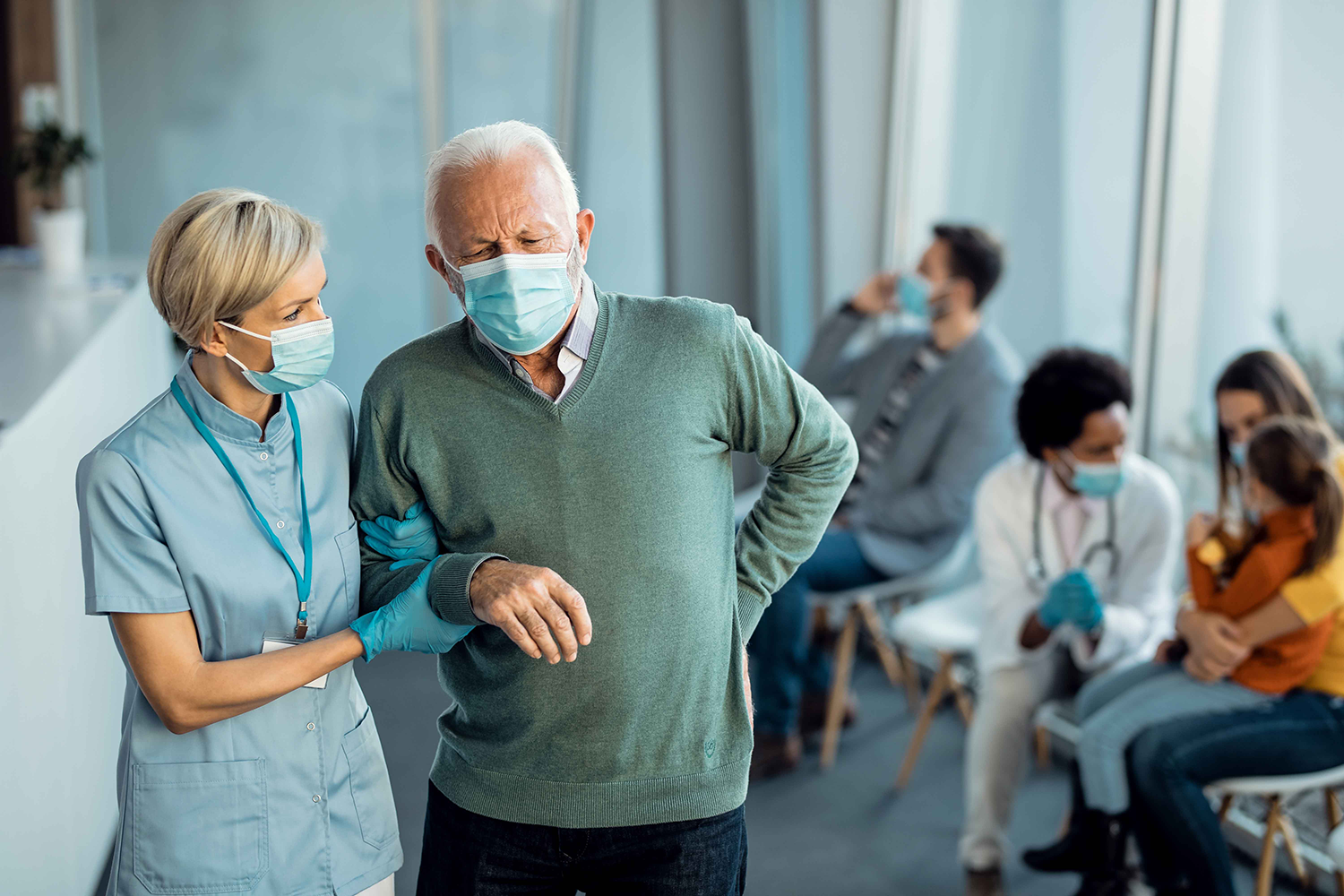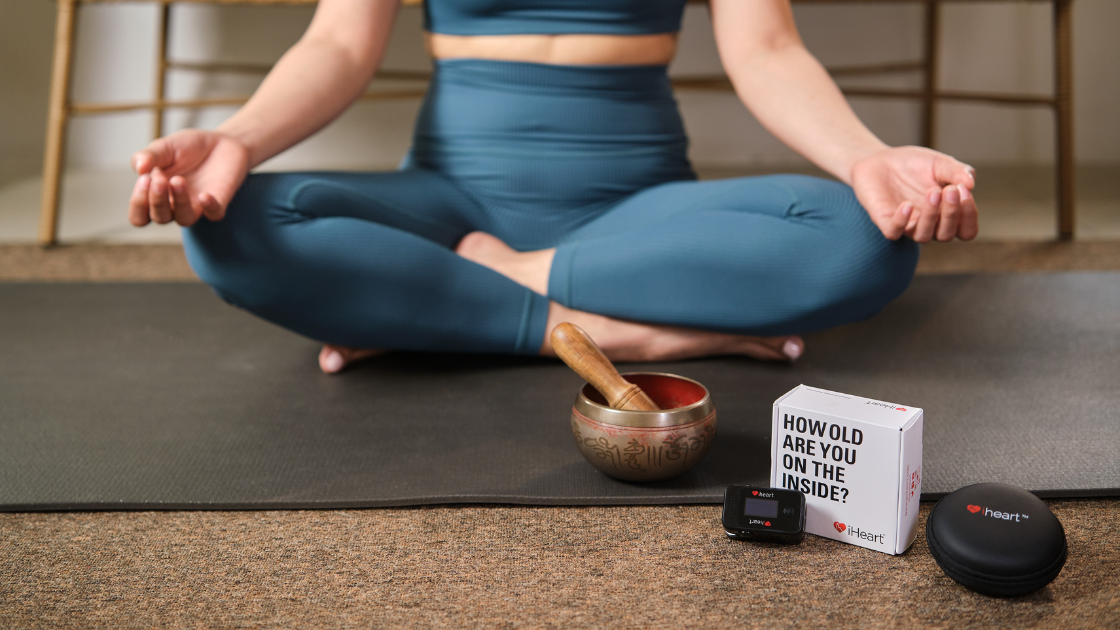We all know that a healthy heart is crucial to longevity and overall wellness. But did you know that the health of your aorta, the main artery that carries blood away from your heart, is just as important?
As you age, your spine and other internal structures naturally stiffen. When this happens, your aorta does as well. This occurrence is known as aortic stiffness, and it can compromise your overall health.
At iheart, the concept of aortic stiffness is foundational to our approach to wellness and the key to maximizing overall health.
In this article, you’ll learn:
- What is aortic stiffness
- The consequences of aortic stiffness
- What is internal mobility
- How the iheart family of apps empower you to reduce aortic stiffness and help you live longer
Explaining Aortic Stiffness
“Aortic stiffness” isn’t a term you often hear outside of the medical world. If this is your first encounter with it, don’t worry – we’re here to break it down for you and help you take charge of your health with some helpful tips and resources.
A quick biology refresher: the aorta is the largest artery in your body. It hugs your spine and flexes with it as you breathe. It’s also the structure that carries the nutrient-rich, oxygenated blood from the heart to the rest of your body parts and organs with each breath. When blood flow through this channel is hampered by disease or trauma, life-threatening consequences can develop in a matter of minutes.
The aorta naturally stiffens as we age. When this region stiffens, the vital exchange of nutrients that occurs with each breath falters. Pressure builds up in the heart as blood travels and fills the heart too quickly, decreasing blood flow to the coronary arteries and starving your heart in the process.

Consequences of Aortic Stiffness
The increase in blood pressure and decrease of blood flow to coronary arteries as a result of aortic stiffness is a surefire recipe for congestive heart failure1. In addition to being a major risk factor for cardiovascular complications such as stroke, myocardial infarction, and renal problems, hypertension is a well-known global cause of death in the elderly.2
Not only does your heart suffer from aortic stiffness, but your brain does too. The high pressure caused by a stiff aorta exposes small and fragile brain blood vessels to increased peak pressures, creating areas of brain cell death that lead to cognitive decline over time2 (in medical terms, this is called microangiopathic change).
Aortic stiffness has been identified as a correlate and potential risk factor to dementia. Extreme aortic stiffness is also linked to microvascular lesions in high-flow organs including the kidney and brain, which suggests that aortic stiffness eventually damages the tiny capillaries in these organs.3
Countless studies have confirmed that aortic stiffness is a proven risk factor for not just cardiovascular disease4 (i.e. strokes5, heart failure6) and dementia7, but ALL biological causes of death8.
Internal Mobility and its Effect on Aortic Stiffness
If reading this has sparked any concern, don’t worry – there’s a solution, and it’s called internal mobility. Internal mobility is the opposite of aortic stiffness. It refers to the flexibility and ease of movement in internal areas like the spine, ribcage, diaphragm, and other internal structures and tissues. By improving your internal mobility, you can begin to reverse aortic stiffness and take charge of your heart health.
Here’s how internal mobility works: with each breath, nutrient-rich blood is pumped out of your heart to all the areas of your body as your diaphragm – the major muscle located below the lungs that facilitates respiration – descends.
This action applies gentle pressure on many of your vital organs (e.g. your spleen, liver, kidneys, pancreas), squeezing them in a way that promotes microcirculation: the healthy exchange of blood flow and other nutrients through the tiny blood vessels in your organs. Additionally, each breath drives the exchange of cerebrospinal fluid (CSF) to and from the brain, a process that provides nutrients to your control center and gets rid of wastes that inevitably build up.
Good internal mobility comes with countless benefits. A smooth, fluid process means your life-sustaining organs, your brain, and all the other cells in your body receive the nutrients they need to power you through your days and nights. Your cardiovascular system stays tuned up, your organs and muscles are nourished, and your brain is protected from the cell death that occurs when “missed connections” happen as a product of this exchange.
Put simply, internal mobility promotes longevity by protecting you from cardiovascular disease, cognitive decline, and cellular death. By making healthier lifestyle changes and participating in exercises and activities that help you move with each breath, you can improve your physical wellness and internal mobility. Learn more about internal mobility and how to improve it in our Internal Mobility blog post.

Start Reversing Aortic Stiffness with the iheart Family of Apps
The iheart Device and family of apps is here to help you monitor your progress as you work to reverse and prevent aortic stiffness. The iheart Internal Age, iheart Brain, and iheart HRV apps allow you to measure and track your aortic stiffness with incredible precision, showing real-time data that gives you insight into how your daily choices affect your health.
The iheart Internal Age app uses the fingertip pulse oximeter to determine your aortic Pulse Wave Velocity (aPWV), a value that represents your internal mobility and aortic stiffness8. Since internal mobility decreases naturally as we age, it correlates this information with scientific data on the average aortic pulse wave velocities across different age groups. This allows you to use the app to see and track how old you really are on the inside.
The iheart Brain app quantifies how internal mobility affects your brain’s cognitive health by measuring your orthostatic response – or how fast your autonomic nervous system (unconscious brain) kicks in when blood pressure changes occur as you move from a sitting to a standing position.
The iheart HRV app illustrates how a flexible spine and internal mobility affects your ability to respond to stress. with each breath, blood and air flow through the body and trigger associated swings in heart rate on a beat-by-beat basis.
Take Charge of Your Internal Health with iheart
Although these apps help you understand and address aortic stiffness in different ways, their common goal is to help you track and improve your internal health overall. The iheart Device and family of apps empower you to understand your current internal health and watch as healthy lifestyle changes improve your scores – and consequently, your physical longevity.
Don’t wait to start your journey towards a longer, healthier life. iheart is ready to empower you in your new lifestyle choices and provide real-time feedback on your aortic stiffness.
Sources
1. The Role of Arterial Stiffness and Central Hemodynamics in Heart Failure
2. New progress on the study of aortic stiffness in age-related hypertension
3. Aortic stiffness, pressure, and flow pulsatility, and target organ damage
5. Aortic pulse wave velocity: an independent marker of cardiovascular risk
6. Arterial stiffness and stroke: de-stiffening strategy, a therapeutic target for stroke
7. Researchers Find Link Between Arterial Stiffness and Dementia






Share:
Cardiovascular Health Problems Are Increasing – Here’s The Tech You Need to Prevent Them
Three Biohacks for Overall Health Everyone Should Know